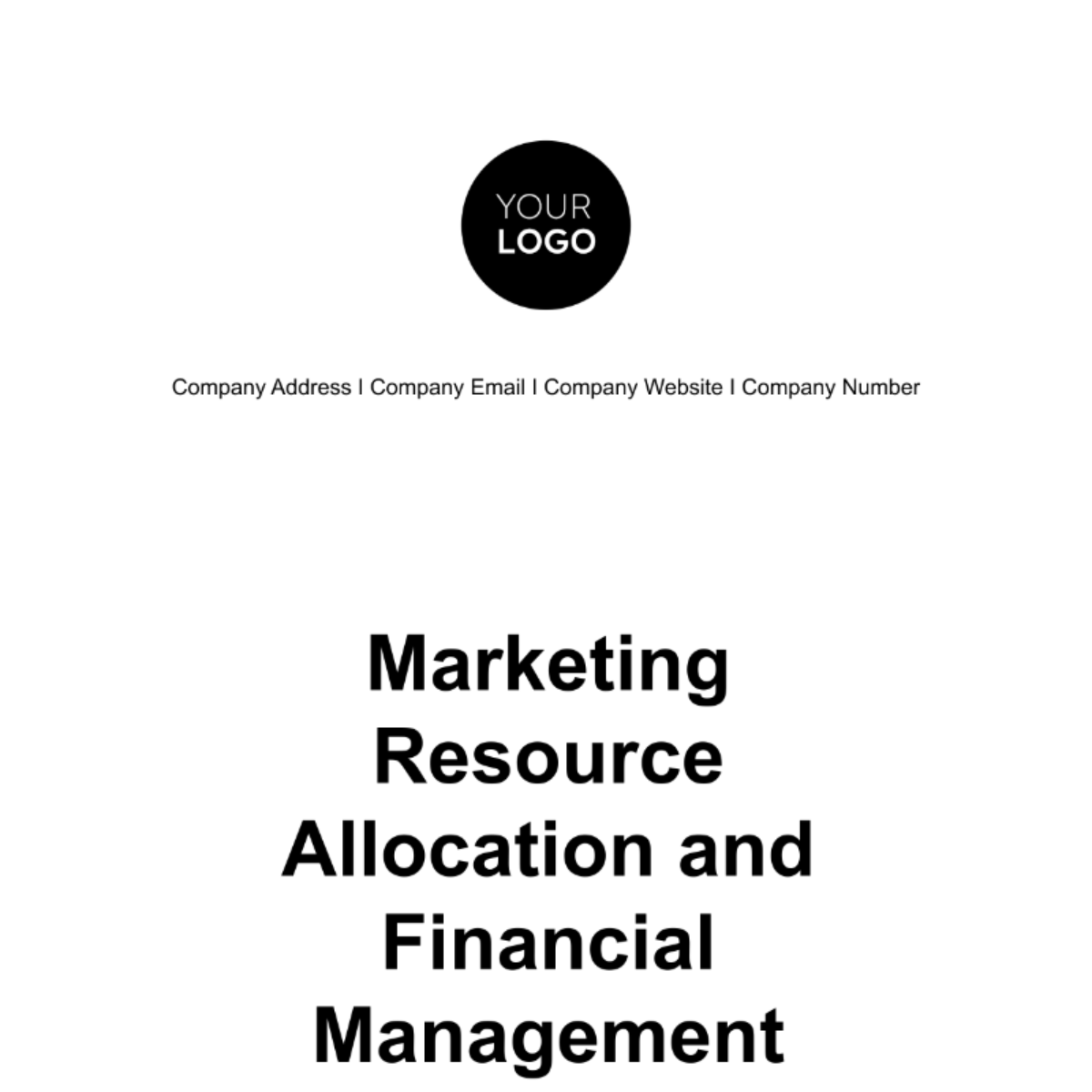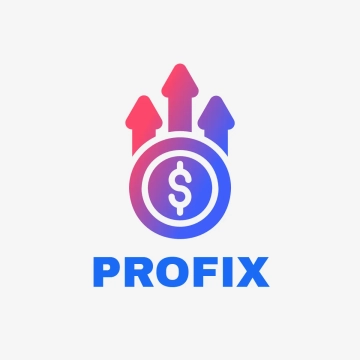Free Marketing Resource Allocation and Financial Management

Executive Summary
A. Introduction
The marketing resource allocation and financial management plan is designed to support the launch of our new product line, "[Product Name]" starting in 2050. This comprehensive plan outlines the allocation of resources and budget to achieve our marketing objectives efficiently.
B. Objectives
Our primary objectives for this marketing plan include:
Increase brand awareness by 20% within the first year.
Generate $5 million in revenue from the [Product Name] product line within the first two years.
Achieve a return on investment (ROI) of at least 150% within three years.
C. Key Metrics
To measure the success of this plan, we will focus on the following key performance indicators:
Website traffic and engagement.
Sales conversion rates.
Cost per acquisition (CPA).
Customer lifetime value (CLV).
D. Budget Overview
The budget for this marketing plan is as follows:
Expense Category | Budget Allocation (USD) |
Advertising | $1,500,000 |
Content Creation | $750,000 |
Marketing Technology | $300,000 |
Personnel | $1,200,000 |
Miscellaneous Expenses | $250,000 |
Total Budget: | $3,000,000 |
Market Analysis
A. Market Research
Market research indicates a growing demand for [Product Name] in the market. According to our research conducted in 2050, the market size for advanced tech gadgets is estimated at $10 billion and is expected to grow by 15% annually over the next five years. Customers are increasingly looking for innovative solutions that [Product Name] offers, including cutting-edge features such as AI integration and enhanced security.
B. Competitive Analysis
Our competitors in the advanced tech gadgets industry include "[Competitor 1]" "[Competitor 2]" and "[Competitor 3]" A SWOT analysis reveals their strengths, weaknesses, opportunities, and threats. We have identified key differentiators that set [Product Name] apart, including its advanced AI capabilities and unmatched user experience.
C. Target Audience
Our target audience comprises tech-savvy individuals aged 25 to 45 who are early adopters of technology. They are primarily professionals and enthusiasts seeking high-quality gadgets that simplify their lives. Their pain points include the need for reliable and innovative tech solutions to stay ahead in a fast-paced digital world. Understanding our target audience will guide our marketing strategies to effectively reach and engage with them.
Marketing Strategy
A. Marketing Goals
Our marketing goals are aligned with our overall objectives for the [Product Name] product launch in 2050:
Increase Brand Awareness: We aim to increase brand awareness by 20% within the first year through targeted advertising and content marketing.
Drive Sales: Our goal is to generate $5 million in revenue from [Product Name] within the first two years by implementing effective sales and marketing strategies.
Achieve High ROI: We are committed to achieving a return on investment (ROI) of at least 150% within three years, ensuring that our marketing efforts yield a substantial profit.
B. Channel Selection
To reach our target audience effectively, we will leverage the following marketing channels:
Online Advertising: We will invest a significant portion of our budget in online advertising through platforms like Google Ads, Facebook Ads, and LinkedIn Ads to reach our target demographic.
Content Marketing: Content will play a crucial role in our strategy. We will create blog posts, videos, and infographics to educate our audience about the benefits of "TechGenius Pro."
Social Media: We will maintain an active presence on social media platforms like Instagram, Twitter, and YouTube to engage with our audience, share valuable content, and build a community of tech enthusiasts.
C. Campaign Planning
We will execute a series of marketing campaigns throughout the year to achieve our objectives. Key campaigns include:
Product Launch Campaign: A high-impact campaign around the product launch date, including teaser videos, countdowns, and influencer partnerships.
Holiday Promotions: Special promotions during major holidays to capitalize on increased consumer spending.
Back-to-School Campaign: Targeting students and parents with special offers and discounts before the start of the school year.
D. Content Strategy
Our content strategy will revolve around educating and engaging our audience. We will produce informative blog posts, how-to videos, and user testimonials. A content calendar will be created to ensure a consistent flow of content across all channels.
Resource Allocation
A. Budget Allocation
The budget for our marketing plan is $3,000,000, allocated as follows:
B. Personnel Allocation
Our marketing team consists of skilled professionals, including:
Marketing Manager: Responsible for overall strategy and campaign management.
Content Creators: Writers, videographers, and designers responsible for content creation.
Advertising Specialists: Experts in online advertising platforms.
Data Analysts: Monitoring campaign performance and providing insights for optimization.
Marketing Tools and Technology
We will utilize the following tools and technology to execute our marketing plan effectively:
Marketing Automation Software: To streamline email marketing and customer segmentation.
Analytics Tools: Google Analytics and social media insights for data analysis.
Content Management System (CMS): To manage and publish content on our website.
Social Media Management Tools: For scheduling and analyzing social media posts.
Financial Management
A. Revenue Projections
Our revenue projections for the [Product Name] product line over the next three years are as follows:
These projections are based on our market research, competitive analysis, and the assumption that we will successfully capture a significant market share.
B. Expense Projections
We anticipate the following expenses for our marketing plan:
C. ROI Analysis
We will calculate the Return on Investment (ROI) for each year as follows:
For 2050:
Net Profit = Revenue (2050) - Total Expenses (2050)
ROI (2050) = \frac{$2,000,000 - $1,300,000}{ $1,300,000} \times 100 = 53.85%
Similarly, we will calculate ROI for 2051 and 2052.
D. Risk Assessment
Identifying potential risks is crucial for effective financial management. Some risks to consider include:
Market competition leading to price wars.
Economic downturn affecting consumer spending.
Technological disruptions impacting product relevance.
Implementation Plan
A. Timeline
Our timeline for implementing the marketing plan is as follows:
Task | Start Date [year] | End Date [year] |
Product Development | [MONTH-YEAR] | [MONTH-YEAR] |
Marketing Strategy Planning | [MONTH-YEAR] | [MONTH-YEAR] |
Campaign Execution | [MONTH-YEAR] | [MONTH-YEAR] |
Performance Evaluation | [MONTH-YEAR] | [MONTH-YEAR] |
B. Task Assignments
Key task assignments include:
Marketing Manager: Overall strategy and campaign management.
Content Creators: Content development and promotion.
Advertising Specialists: Ad creation and management.
Data Analysts: Performance monitoring and reporting.
C. Milestones
Milestones to track progress include:
Product launch date.
Achievement of revenue targets.
Successful execution of key marketing campaigns.
Quarterly performance reviews.
Monitoring and Optimization
A. Performance Tracking
We will employ robust performance tracking tools to monitor the effectiveness of our marketing campaigns. Key metrics we will track include:
Website traffic and bounce rates.
Click-through rates (CTR) for ads.
Conversion rates on landing pages.
Social media engagement metrics (likes, shares, comments).
Email open and click rates.
Performance tracking will be conducted on a weekly and monthly basis to identify trends and areas that require attention.
B. KPI Monitoring
Our key performance indicators (KPIs) will be closely monitored to ensure we are on track to meet our goals. KPIs include:
Brand awareness metrics (mentions, searches).
Sales and revenue targets.
Cost per acquisition (CPA).
Return on investment (ROI).
Regular reports will be generated to assess KPI performance and guide decision-making.
C. A/B Testing
To optimize our marketing efforts, we will conduct A/B tests on various elements of our campaigns. This includes testing different ad creatives, landing page designs, email subject lines, and content variations. A/B testing will help us identify what resonates best with our audience and refine our strategies accordingly.
D. Continuous Improvement
Continuous improvement is at the core of our marketing approach. Based on performance data and feedback, we will make iterative adjustments to our campaigns. This may involve reallocating budget, refining targeting, or revising content strategies. Continuous improvement ensures that we adapt to changing market dynamics and stay competitive.
Conclusion
In conclusion, our Marketing Resource Allocation and Financial Management Plan provides a comprehensive framework for achieving our marketing objectives for the [Product Name] product line. By setting clear goals, allocating resources effectively, and closely monitoring performance, we are confident in our ability to increase brand awareness, drive sales, and achieve a high return on investment. Our commitment to continuous improvement ensures that we remain agile and responsive in a dynamic market landscape. With this plan in place, we are poised for success in the coming years.
- 100% Customizable, free editor
- Access 1 Million+ Templates, photo’s & graphics
- Download or share as a template
- Click and replace photos, graphics, text, backgrounds
- Resize, crop, AI write & more
- Access advanced editor
Streamline resource allocation and financial management with our Marketing Resource Allocation and Financial Management Template, accessible on Template.net. Tailored with industry keywords, this editable document simplifies communication. Utilize our AI Editor Tool for seamless customization, ensuring precise budgeting and efficient resource allocation. Elevate your marketing strategy with this comprehensive template designed for financial optimization.





























